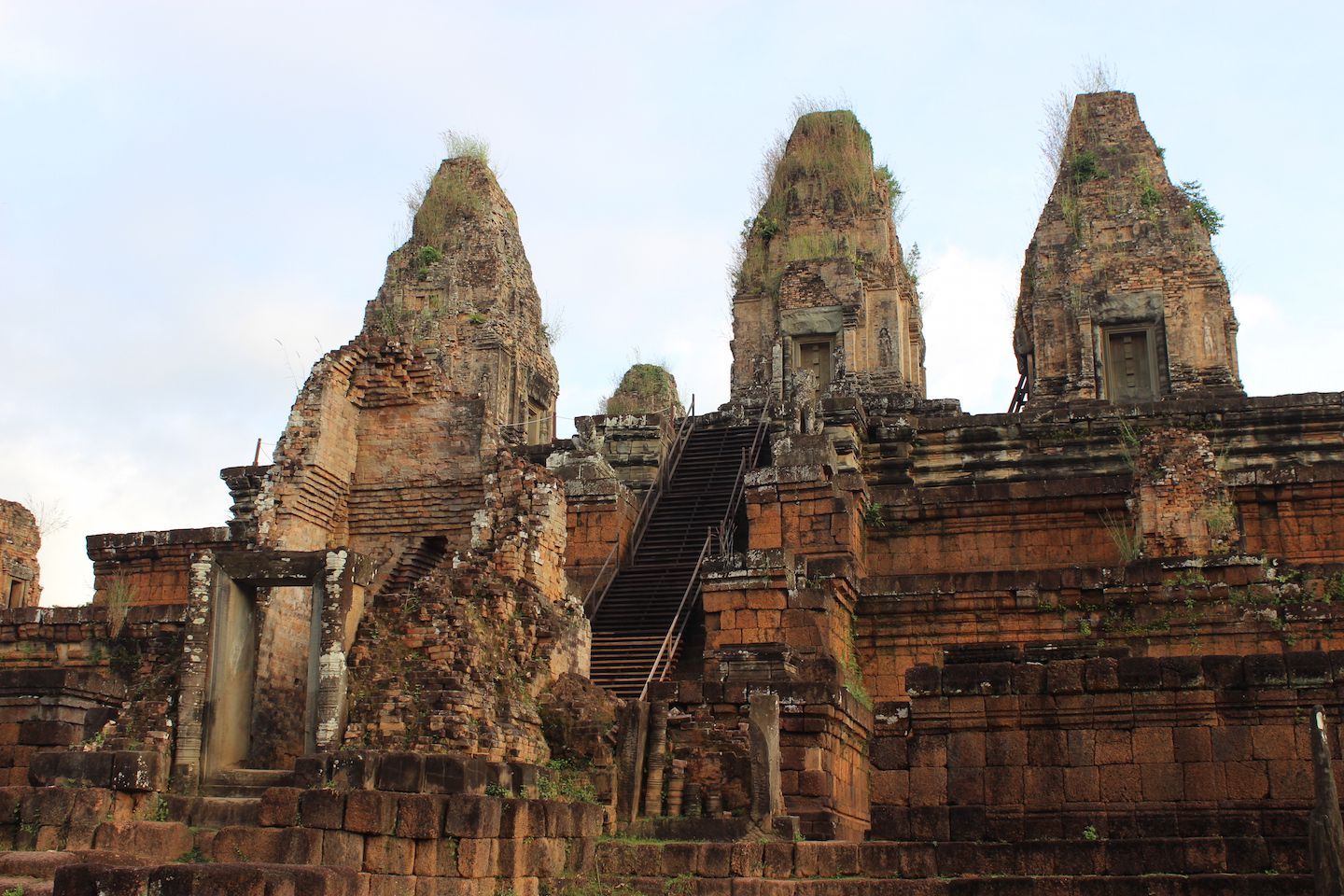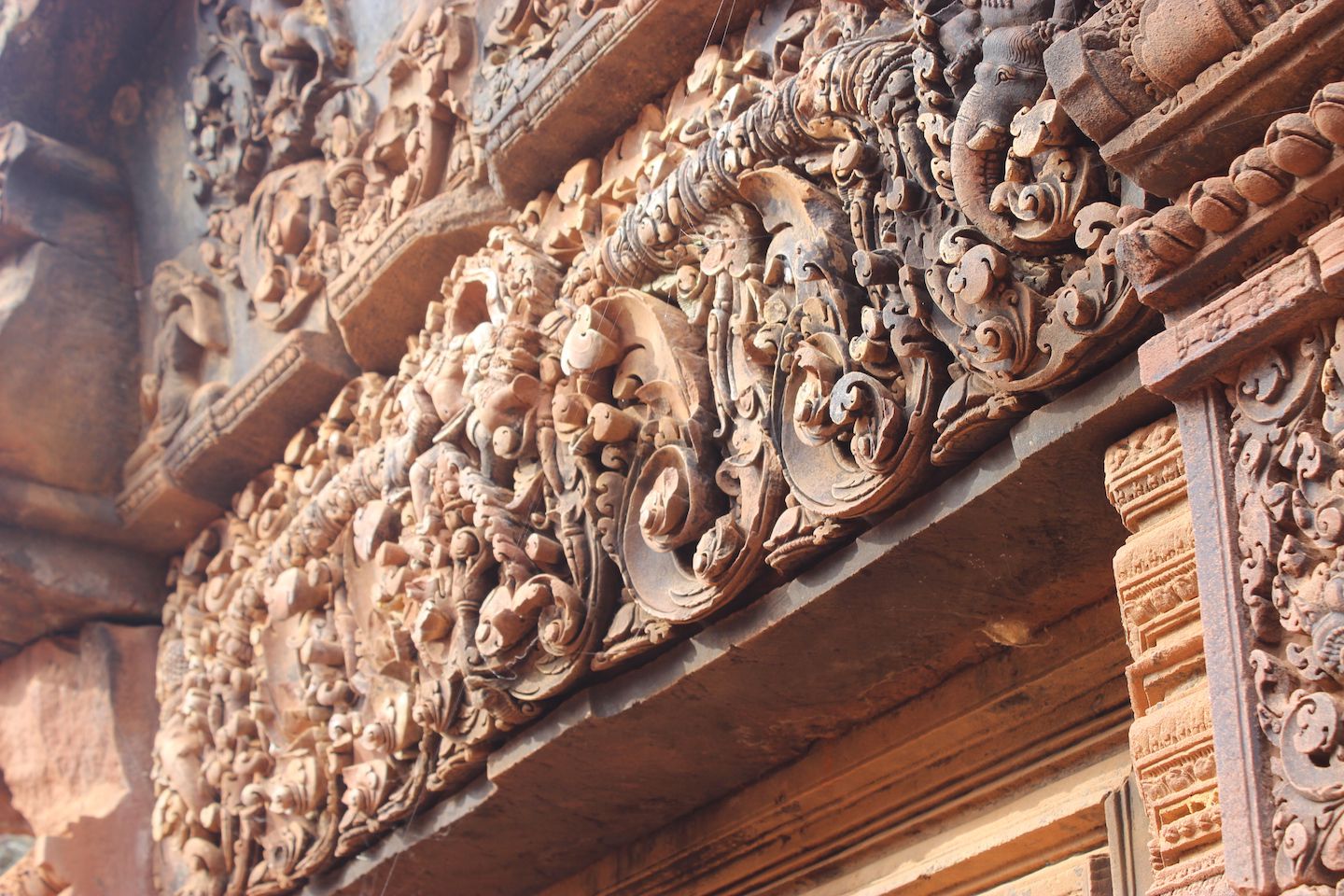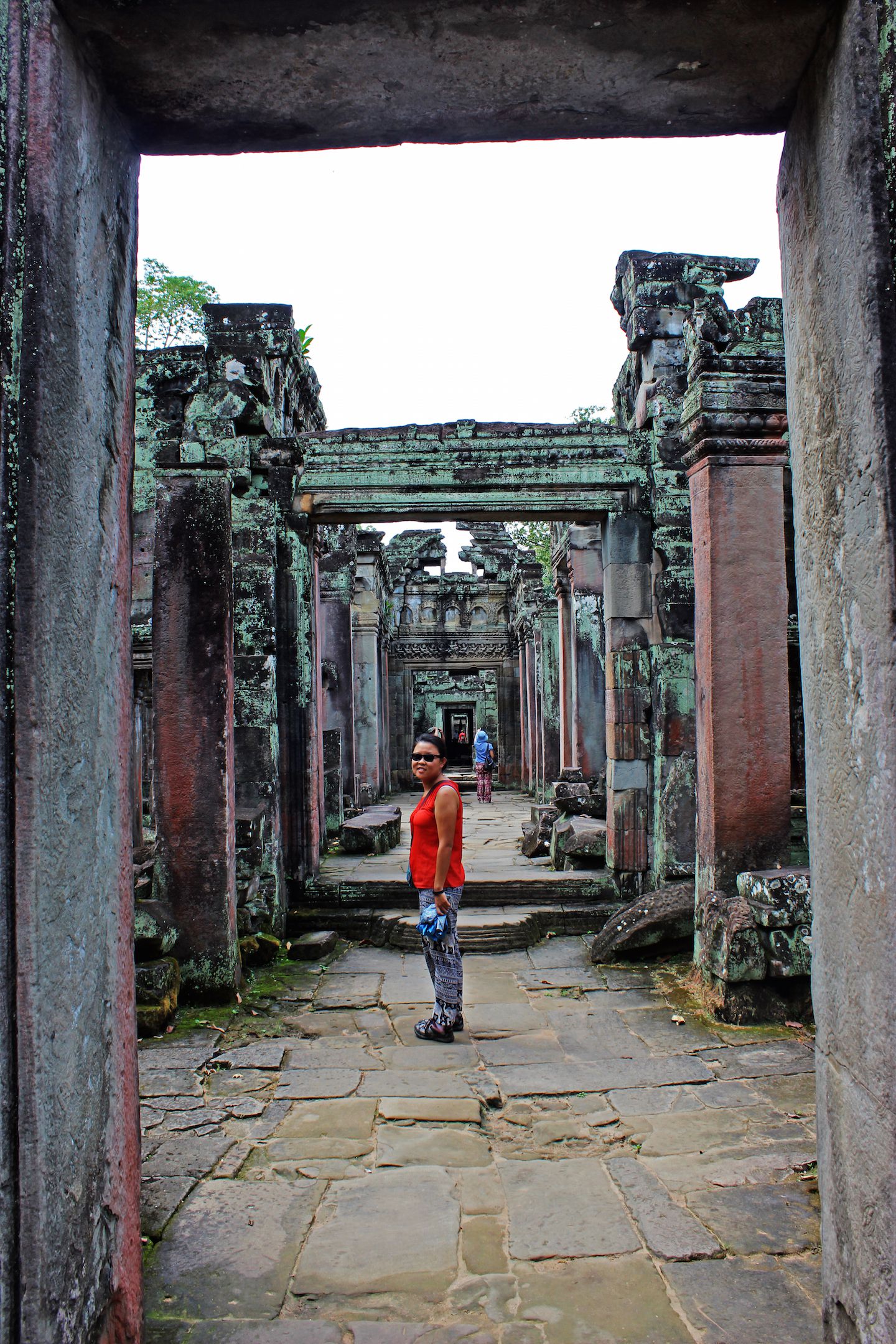This is part IV of the Exploring Angkor series of posts on Angkor Archaeological Park.
Exploring Angkor
Part I: Angkor Wat
Part II: Eastern Angkor
Part III: Angkor Thom
Part IV: East Baray and Banteay Srei

Continuing our Angkor saga, we left for our last day (day 3) of temple runs at 4:30am for yet another attempt at seeing the Angkor Wat sunrise before we headed to the temples in the East Baray area as well as Banteay Srei. This was the bigger loop, as these temples were further out from Angkor Wat and Angkor Thom.
Pre Rup
A 10th century, three-tiered, red brick-walled temple, Pre Rup predates the rest of the temples we’ve seen in the previous days. At Pre Rup, instead of seeing the usual stone-y temple, we found an interesting mix of materials used. The combination of laterite rocks and red bricks made a pretty sight at sunrise, as the colors were accentuated by the low sunlight reflecting on them.

The temple had several shrines within its outer walls and the steps leading up to the top level were steep, as usual. On the top level, five sanctuary towers overlooked the surrounding jungle-covered area.

Arriving at the temple a bit before 7am granted us a tourist-free experience, as we claimed the temple for ourselves.
Banteay Srei
Retreated from the main cluster of Angkor temples, Banteay Srei was located about 20km northeast of Angkor Wat. A temple that surprises not for its size, but for its beauty, Banteay Srei was a charming miniature temple with very detailed and lovely carvings. The pink-colored laterite stones shone in the morning light, enhancing the already marvelous sight.

Banteay Srei was not a royal temple built by a king like many of the other temples, but rather built by a counselor of the King Rajendravarman II. There were several statues with monkey and garuda heads around the main towers, which was another unique aspect of Banteay Srei. On the corner of the tiered towers, instead of the usual naga carving, we actually saw what looked like even smaller towers rising to the sky.

The fact that Banteay Srei was not built by a king made a difference. While royal temples were built to be large and tall for grandeur and magnificence, Banteay Srei was built to be intricate and ornate. It was clear everywhere in the temple that the designs were elaborate in every corner and crevasse. The inner parts of main temple at Banteay Srei were off-limits, but I wish I could have gone closer to see all the delicate details.

Nowadays, the remote location of the temple inspired the development of a whole touristic area around the temple, with exhibition halls, restaurants and souvenir shops. We were glad we visited the temple early in the morning, because by the time we headed to the exit, a horde of tour groups were entering the temple. During the drive back to the East Baray area, there were countless tour buses driving towards Banteay Srei.

Banteay Samre
A raised causeway led the way to the east entrance of Banteay Samre, an Angkor Wat-style temple. Several guardian lion statues (with funny bums) were carved and placed on the balustrade of the causeway.

Banteay Samre was built by a high official of the king’s court, and thus it was not a royal temple. The main tower resembled the one in Angkor Wat while the most unique part of Banteay Samre were the roof tops. Countless lingas were built on the rooftops of galleries, a Hindu symbol of good fortune.

East Mebon
The island temple of East Mebon was once surrounded by the East Baray, a huge (7.5km by 1.8km) man-made water reservoir. I can only imagine how stunning the view from the top tier would have been back then, with the infinite-looking, 360-degree, surrounding lake. Back then, we would have taken a boat to the temple.

No moats or walls were needed here, since the water provided the protection this temple needed. Similar to the other temples, East Mebon also had three tiers and five Pre Rup-style towers at the top. Elephant statues were placed on every corner of each tier.

Ta Som
Like a miniature version of Ta Prohm, Ta Som began with a face tower gate leading into the temple. One of the interesting sights here was the moat, right before the entrance to the main sanctuary, that had green algae covering its entire surface. It looked like real, solid ground. What my eyes told me conflicted with what my brain knew to be true.

Unlike Ta Prohm, Ta Som was not as overtaken by nature; however, we did see a few fig trees growing on top of the temple rocks. All in all, Ta Som was a very charming, semi-ruined temple.

Neak Pean
If you have been reading all the posts in the Exploring Angkor series and are getting tired of seeing pictures of temples that are starting to look and sound the same, imagine how we felt going through all of them! Neak Pean provided a much-needed breath of fresh air. Starting with the main entrance, it was different from every other temple. Due to its isolated location in the middle of a shallow lake, a long boardwalk just above the surface of the water was built leading to Neak Pean.

The walk was very pleasant with nice views on both sides of trees literally coming out of the lake. Since the boardwalk was not far from the calm water surface, it almost felt like we were walking in a world covered by water, because for as far as we could see, it was shallow water and trees. Further in, but still on the boardwalk, green algae took control of the lake surface like the moat at Ta Som and a small jungle formed with densely growing plants. If you just looked at that part of the lake, it looked identical to a grassy ground with trees and falling leaves. Had I not known that I was walking on a lake, I could have easily stepped on the “ground” of algae and sunk into the water.

The end of the boardwalk opened into a clearing and Neak Pean. The temple itself consisted of four surrounding ponds and a large inner one, which had the main sanctuary tower. Pure symbolism, Neak Pean is believed to represent the sacred Buddhist lake Anavatapta that had healing properties. I could only imagine what it would feel like to discover a temple like this as an explorer – walking in the middle of the swamped area and stumbling upon such a masterpiece in Khmer art. They must have marveled in wonder.

One of the most unique temples in Angkor Archaeological Park, Neak Pean was also one of the most memorable. It was all we needed to feel renewed and ready to continue exploring more temples.
Preah Khan
A large-scale version of Ta Prohm, Preah Khan was one of the biggest temples built by King Jayavarman VII. More than just a temple, Preah Khan used to be home to around one thousand teachers in what looks like a Buddhist university and city at the time.

One of the characteristic features of Preah Khan was the two-story building with round columns. Khmer architecture doesn’t usually utilize columns as a structural component – most other temples used walls of stacked stones walls as support.

The hall of the dancers had many carvings of dancing apsaras, the heavenly beautiful women that often come to the world of men. Other carvings in the Preah Khan were a bit different and had greater depth to them – almost fully 3D, “jumping” out of the walls. A large section of the temple was in ruins or under restoration and thus closed for visits. However, due to the symmetrical nature of all temples, we had a good grasp of what the sections we couldn’t visit looked like from walking through just the northern half of it.

Preah Khan was the last temple in our exploration of Angkor Archaeological Park. I remember sitting down near the exit of Preah Khan and reflecting on all the awe-inspiring sights we had seen in the past three days. Even though we were getting tired of the temples (after 17, they were all starting to run together in my head), we also felt a bit nostalgic already, especially as we drove by Angkor Thom and Angkor Wat on the way back. Visiting Angkor was one of the most anticipated experiences of our year of travels and it lived up to plus exceeded all of our expectations. There was, is, and will be nothing like it anywhere else in the world. I hope many future generations to come will have the opportunity to visit and marvel like we did. For now, we waved goodbye.
For more pictures of the East Baray and Banteay Srei, please visit the gallery!

